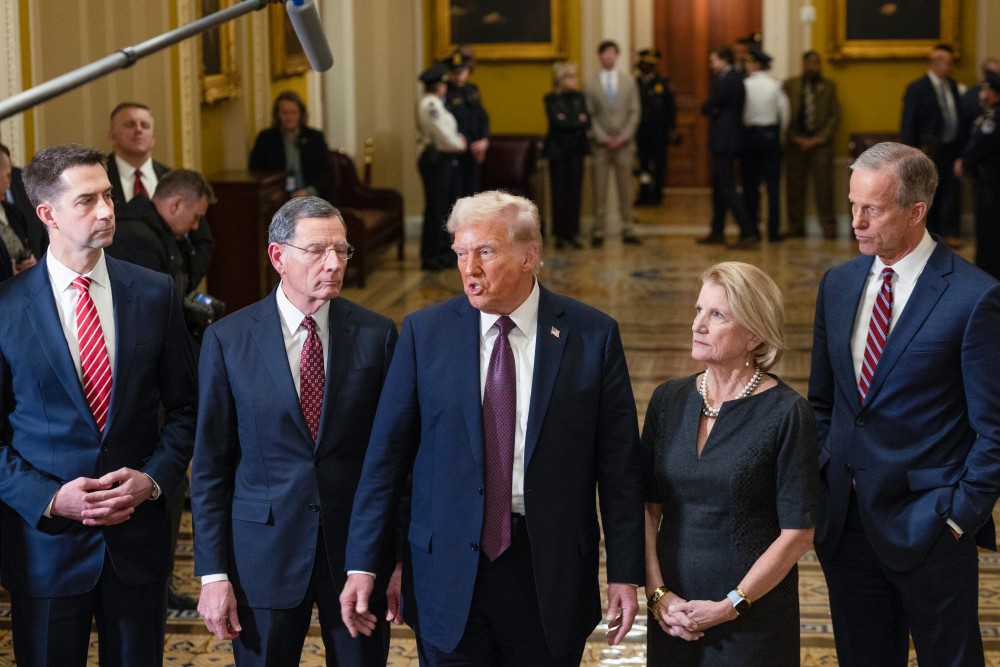
PROSPECT HEIGHTS — When the federal government increased its deportation efforts in the mid-1970s, Bishop Nicholas DiMarzio, then a priest in the Archdiocese of Newark, recalls the harm it caused by forcing many undocumented immigrants into situations that led to injury, even death.
“It was horrible … they would surround these buildings, go into them, and people would jump out of windows and get hurt. Some people even got killed … it was bad,” Bishop DiMarzio, who led the archdiocese’s immigration services at that time, told The Tablet.
The bishop emeritus of the Diocese of Brooklyn described his experience in the 1970s to contextualize the mass deportation efforts that President-elect Donald Trump has promised — which are a top priority of his once he is inaugurated on Jan. 20 — as well as the House of Representatives recent passage of legislation to deport undocumented immigrants charged with certain crimes.
The Laken Riley Act focuses on detaining migrants who have been arrested for and/or convicted of burglary, theft, larceny, or shoplifting. The bill, which the Senate will likely vote on before the inauguration, is named after University of Georgia nursing student Laken Riley, who was killed last year by an undocumented immigrant from Venezuela.
Bishop DiMarzio said the legislation, and the mass deportations that are expected to follow, is a step in the wrong direction — “a vigilante approach to a mythical problem that these people are hurting us.”
“It’s an unfortunate situation where you’re not dealing with facts — you’re dealing with a prejudice or an idea that once we get rid of all of these undocumented people that the country’s going to be in great shape,” he said. “It’s very reminiscent of other countries where you scapegoat a group of people and decide that if we get rid of them, everything will be fine.”
Bishop DiMarzio is an expert on immigration policy. From 1985 to 1991, he was executive director of the United States Conference of Catholic Bishops Migration and Refugee Services. He also chaired the USCCB Committee on Migration from 1998 to 2000 and became a member of the Pontifical Council for the Pastoral Care of Migrants and Itinerant People in 2000.
In retirement, he still publishes a monthly column in The Tablet titled “Walking With Migrants.”
The types of immigration policies supported in Congress and prioritized by Trump also show how the government’s vision for the nation’s immigration system continues to diverge from that of Bishop DiMarzio and other Catholic leaders, which they have advocated for decades.
On Jan. 6., the same day the House passed the Laken Riley Act, the USCCB published an in-depth resource titled “Catholic Elements of Immigration Reform.” The timing was coincidental — the USCCB published the resource before the House vote finished. Still, the differences in each side’s approach illustrate how far apart they are in their vision for immigrant reform.
The USCCB resource details six elements it deems essential to immigration reform:
— Element 1: Enforcement efforts should be targeted, proportional, and humane
— Element 2: Humanitarian protections and due process should be ensured
— Element 3: Long-time residents should have an earned pathway to citizenship
— Element 4: Family unity should remain a cornerstone of the U.S. system
— Element 5: Legal pathways should be expanded, reliable, and efficient
— Element 6: The root causes of forced migration should be addressed
For now, nothing indicates that Congress or the incoming administration considers any of those elements when crafting immigration legislation and policy. If that were to change, Bishop DiMarzio said the place to start is with Element 3, giving long-time residents an earned pathway to citizenship.
“I think that’s probably the only place to start because then you start to regularize that those who are contributing can stay,” Bishop DiMarzio said, “and that’s also a message to others who maybe just came over the border who maybe don’t have a valid reason to get asylum.”
